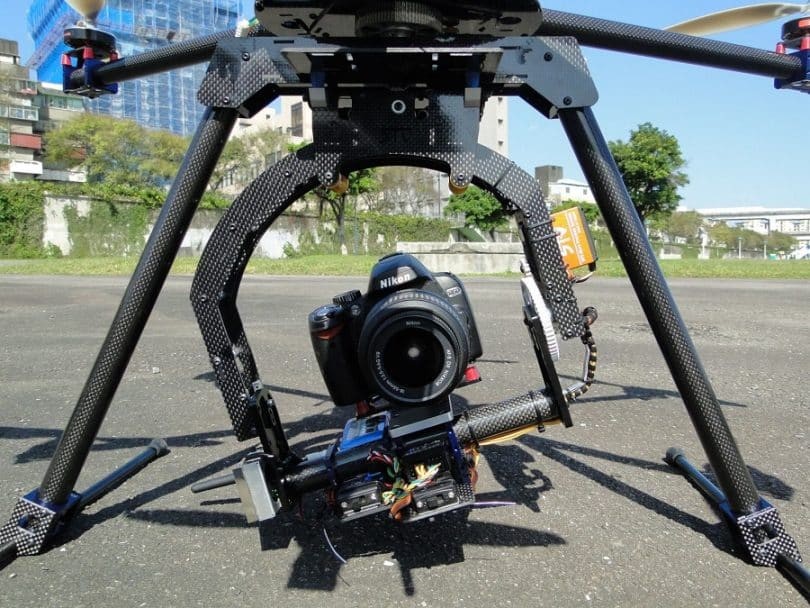What is a gimbal on a drone? In aerial photography and videography, drones have revolutionized how we capture breathtaking footage from the sky. Central to their ability to capture stable and smooth images and videos is a critical component known as a gimbal. But what exactly is a gimbal on a drone, and why is it so essential? In this comprehensive guide, we will delve into the world of gimbals, explaining their function, types, benefits, and much more.
Understanding the Role of a Gimbal on a Drone
A gimbal on a drone is a pivotal device designed to stabilize the camera or payload mounted on the drone’s frame. Its primary function is to counteract the effects of drone movement, such as vibrations, pitch, yaw, and roll, to ensure that the camera remains level and captures smooth and steady shots. You may be interested in this also: How far can a drone fly from the controller
How Does a Gimbal Work?
Gimbals operate on the principle of maintaining a fixed orientation in space, regardless of the drone’s movements. They achieve this through a combination of three axes of rotation:
- Pitch Axis: This controls the up-and-down movement of the camera, stabilizing it against the drone’s pitch (forward and backward) movements.
- Yaw Axis: The yaw axis stabilizes the camera against the drone’s left and right rotational movements.
- Roll Axis: The roll axis compensates for the drone’s rolling motion, ensuring the camera remains level.
You’ll find a combination of sensors, motors, and processors inside a gimbal. The sensors detect any movements or vibrations, and the engines adjust the camera’s position in real time to counteract these movements, keeping it steady.
Types of Gimbals for Drones
There are different types of gimbals used in drone technology:
- Axis Gimbals: These gimbals stabilize the camera on two axes: pitch and roll. They are more straightforward and lighter than 3-axis gimbals, making them suitable for smaller drones and applications where weight is critical. When it comes to finding the perfect gimbals for drones then Bwine F7 GPS Drones with Camera for Adults 4K Night Vision will be a good option.
- Axis Gimbals: These are the most common gimbals on high-quality consumer and professional drones. They stabilize the camera on all three axes: pitch, yaw, and roll, providing maximum stability and smoothness in footage.
Benefits of Using a Gimbal on a Drone
The use of a gimbal on a drone offers numerous benefits:
- Stable Footage: Gimbals eliminate the shaky and jarring movements that can occur during flight, resulting in smoother and more professional-looking footage.
- Improved Image Quality: A stable camera means clearer and sharper photos and videos, even in challenging conditions.
- Versatile Shooting Angles: Gimbals allow for a broader range of camera angles and perspectives, enhancing creativity and storytelling in aerial photography and videography.
- Precise Control: Operators can control the camera’s orientation remotely, allowing for real-time adjustments and capturing shots that would otherwise be challenging or impossible.
Choosing the Right Gimbal for Your Drone
When selecting a gimbal for your drone, consider the following factors:
- Compatibility: Ensure the gimbal is compatible with your drone’s make and model. Not all gimbals fit all drones.
- Payload Capacity: Check the gimbal’s payload capacity to ensure it can support your camera’s or equipment’s weight.
- Number of Axes: Decide whether a 2-axis or 3-axis gimbal is better suited for your needs based on the desired level of stability and the type of shots you plan to capture.
- Sturdiness and Build Quality: Look for durable gimbals to withstand outdoor use rigors and potential crashes.
FAQs
Can I retrofit my drone with a gimbal?
You can often retrofit your drone with a gimbal, but it depends on the specific drone model and compatibility with available gimbal options.
Do all drones come with gimbals?
No, not all drones come with gimbals. Some lower-cost drones may have built-in stabilization, but a gimbal is often required for professional-quality stabilization.
Are gimbals only for cameras, or can they carry other equipment?
Gimbals can carry various payloads, including cameras, sensors, and small packages. They are versatile tools used in multiple applications beyond photography and videography.
Conclusion
In aerial photography and videography, a gimbal on a drone is an indispensable tool for capturing stable and smooth shots. By countering the effects of drone movement and vibrations, gimbals ensure your footage remains steady and professional-looking. Whether you’re a hobbyist or a professional, understanding the role of gimbals and choosing the right one for your drone can significantly enhance the quality of your aerial content. So, next time you capture breathtaking aerial images or videos, remember that the gimbal working behind the scenes helps make it all possible.

